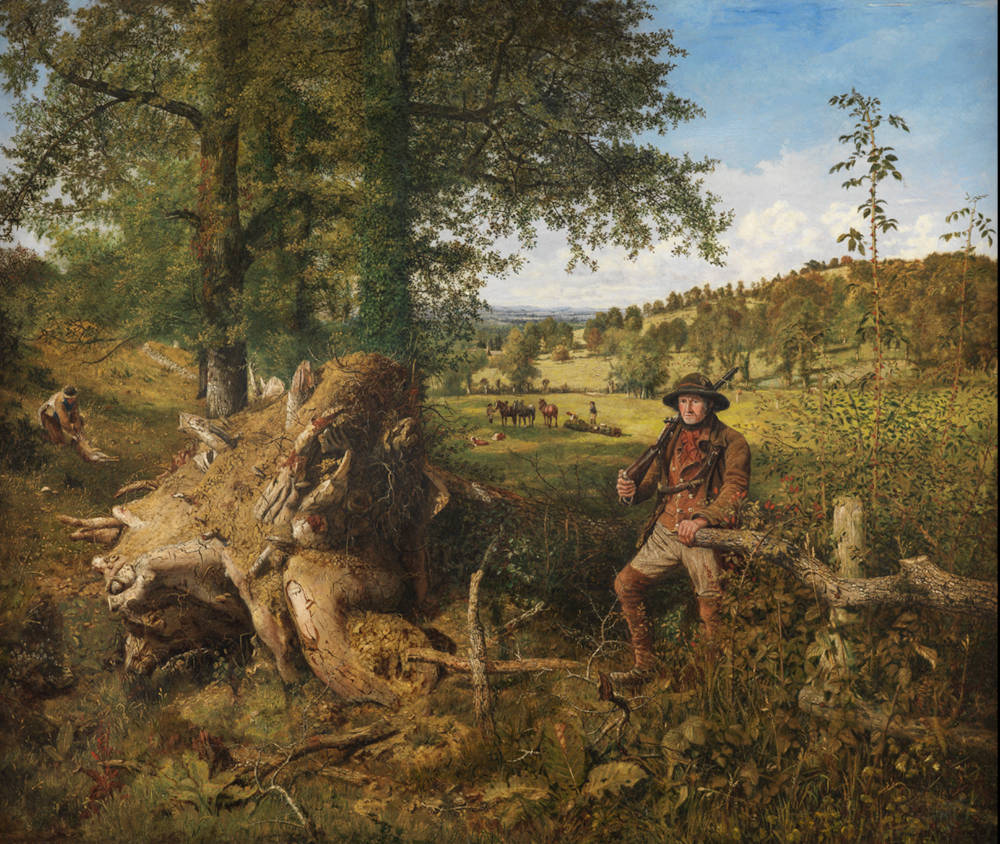
A Day in the Country. John Ritchie (1821-1879). c. 1863 (Exhibited: The Liverpool Institution of Fine Arts, 1863, no 450). Oil on canvas, 24 ¾ x 29 ¼ inches. Provenance: Harold William Smith, from the 1930s, and thence by descent Courtesy of the Maas Gallery. [Click on image to enlarge it.]
Links to Details
Maas Gallery Commentary
John Ritchie is a hard man to pin down, and barely features in contemporary journals or literature. Odd, for he exhibited over 100 paintings in all the major venues - from 1844 in the Royal Scottish Academy to 1875 in the Royal Academy in London - and over 60 of his pictures have been sold at auction in the last 50 years for as much as £110,000. Born in Scotland, Ritchie first exhibited aged 19 in 1840, at the British Institution and the Royal Scottish Academy, and gave his address as ‘Musselburgh’. It is likely that he was related to the sculptor Alexander Handyside Ritchie (b 1805) and his sculptor brother, also John Ritchie (b 1811), who both lived in Musselburgh at this time. He showed his early pictures from the 1850s and 1860s at the Liverpool Academy (from addresses in Edinburgh), alongside those of his close contemporaries, the so-called ‘Liverpool Pre-Raphaelites’: James Campbell, Robert Tonge, William Windus and Daniel Williamson. This group - whose pictures are distinctively full of light and detail of nature, particularly in their rendering of trees - represent a sort of ‘cultural Galapagos’ in which Pre- Raphaelitism developed independently of the main body.
None of these painters, like Ritchie, succeeded in attracting much notice from the critics. All of them, but especially Ritchie, appear to have been influenced by John Brett’s The Stonebreaker and The Hedger (exhibited at the Liverpool Academy in 1857 and 1860). In 1858, from an address in London, he exhibited two ambitious paintings painted in a new manner, parallel to his Pre-Raphaelite style, closer to that of Frith’s large modern life subjects. These were A Winter’s Day in St James’s Park (private collection) and A Summer’s Day in Hyde Park (Museum of London), at the British Institution in London. The success of these was enough to justify staying in London for three years, until he moved back to Edinburgh in 1861. This was followed by a period in Shepherd’s Bush (1866-1872), after which he moved to Bexleyheath in Kent, where he remained.
This painting was exhibited at the Liverpool Academy in 1863, and is a portrait of a farmer on his land. His house is visible atmiddle centre, before the mountains in the distance. The oak trees are carefully numbered, and the butt of one that has been cut down is being hauled away by his men behind. He has lost a tree, its roots nibbled by rabbits which have burrowed underneath into the sandy bank. He has had his revenge with his gun and a man attends to the corpse of the culprit. This unusual composition gives the character of both the man and his land, and although the figure drawing is a little naive, the trees and foliage are dramatically lit and detailed with Ruskinian precision. Ritchie’s work has on occasion been confused with that of George William Mote, a self-taught Worcestershire landscape painter, again influenced by the Pre-Raphaelites. Like Mote, Ritchie’s distinctive technique, direct and fresh, is too personal to be the product of an extensive education; instead, he seems to have learned from his contemporaries, and by meticulous observation of nature.
The Maas Gallery, 6 Duke Street St James's, London SW1Y 6BN, has most generously given its permission to use in the Victorian Web information, images, and text from its catalogues. The copyright on text and images from their catalogues remains, of course, with the Gallery. Readers should consult their website to obtain information about recent exhibitions and to order their catalogues. — George P. Landow
Last modified 21 June 2022